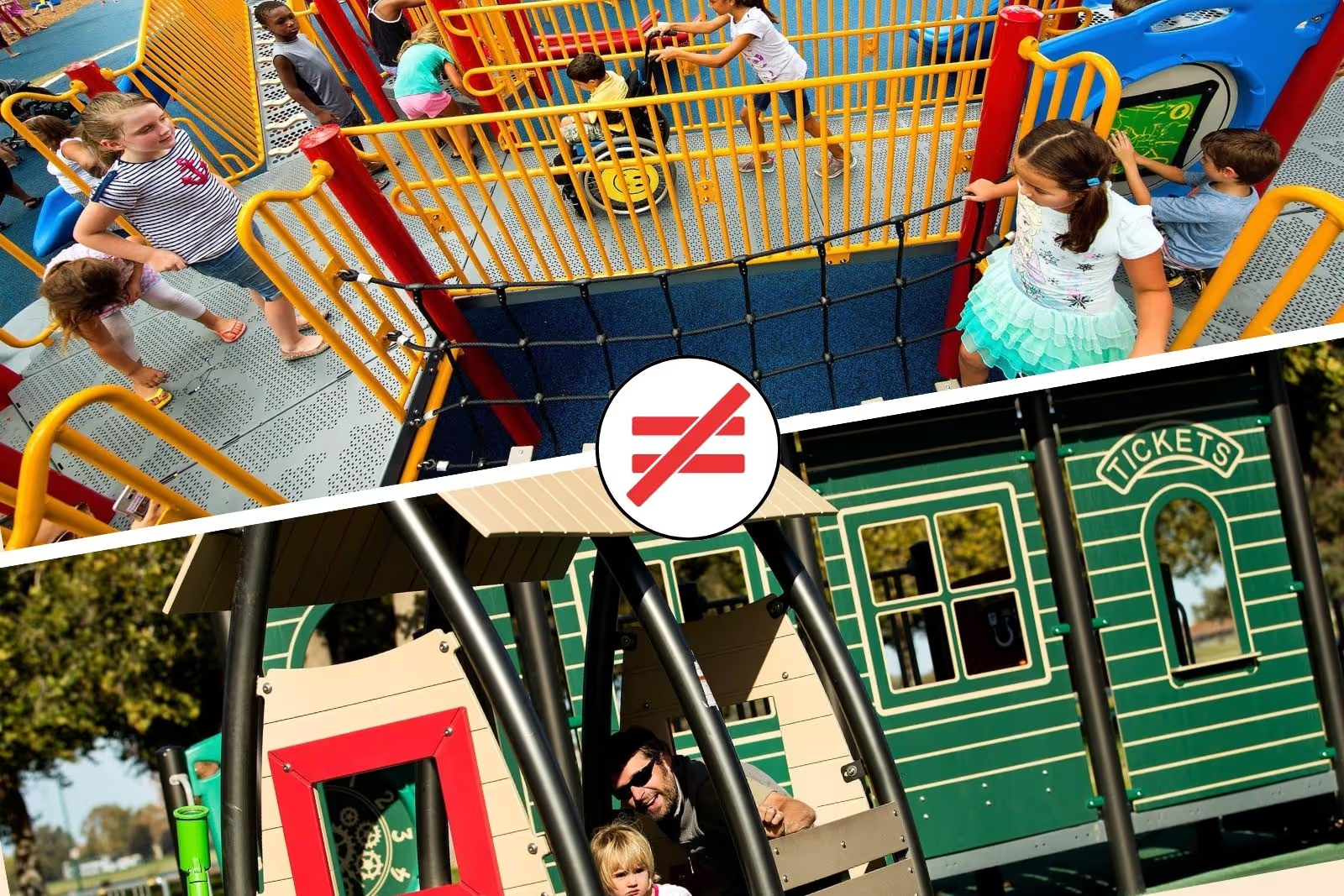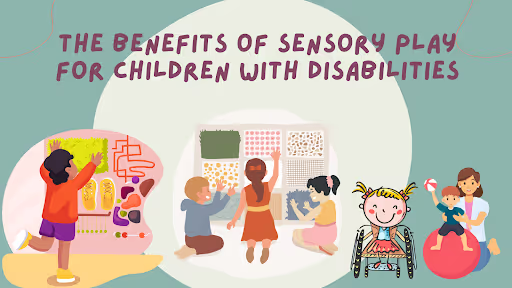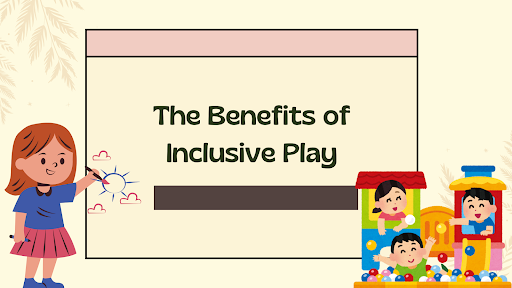8 Modern Playground Equipment Trends
Explore 8 modern playground trends that boost creativity, inclusivity, and fun while helping create healthier, happier spaces for all children.


The landscape of playground equipment is evolving, reflecting advancements in design, technology, and understanding of child development. Modern playgrounds are more than just spaces for physical activity; they are crucial for fostering children's physical, cognitive, and social growth.
Today's playgrounds aim to create inclusive, safe, and engaging environments that cater to the diverse needs of all children. This blog post explores the latest trends in modern playground equipment, highlighting how they contribute to healthier, happier communities.
What Is Modern Playground?

A modern playground incorporates innovative designs and equipment that enhance play experiences while prioritizing safety, inclusivity, and engagement. These playgrounds are designed to stimulate children's minds and bodies, offering varied activities that cater to different interests and abilities.
The goal is to create spaces where every child feels welcome and excited to play, learn, and grow.
8 Modern Playground Equipment Trends
1. Destination and Themed Playgrounds
Destination and themed playgrounds transform ordinary play spaces into extraordinary adventures. These playgrounds often feature unique themes such as pirate ships, castles, or jungle adventures, sparking children's imaginations and providing immersive play experiences.
By creating visually captivating and story-rich environments, these playgrounds encourage children to engage in imaginative and creative play. Here are some key features and benefits of destination and themed playgrounds:
- Imaginative Play: Stimulates children's imaginations, allowing them to embark on adventures and create stories.
- Visual Appeal: Eye-catching designs and vibrant colors keep children engaged.
- Enhanced Learning: Themed elements incorporate educational aspects, teaching children about different cultures, history, or natural elements.
- Social Interaction: Encourages group play, fostering teamwork and communication among children.
- Physical Activity: Diverse equipment promotes physical activity, helping children develop motor skills and stay active, similar to natural playgrounds.
- Community Attraction: Popular spots for families and visitors, contributing to local tourism and economic growth.
2. Safety-Driven Technological Advancements
Safety is a paramount concern in playground design, and technological advancements have significantly enhanced playground safety. From impact-absorbing surfaces to smart monitoring systems that track usage and maintenance needs, modern playgrounds are equipped with cutting-edge technologies to ensure children's safety.
These innovations help prevent injuries and create a secure environment for all children. Here are some critical safety-driven technological advancements:
- Impact-Absorbing Surfaces: Reduce fall injury risk, ensuring a safer play environment.
- Smart Monitoring Systems: Track usage and detect maintenance needs to keep equipment in optimal condition.
- Non-Toxic Materials: Use sustainable materials to protect children's health.
- Real-Time Safety Alerts: Send alerts to caregivers or maintenance staff if safety issues are detected.
- Interactive Safety Features: Include elements that teach children about safety in a fun, engaging way.
- Regular Maintenance Updates: Ensure the playground remains safe and functional with regular updates and inspections.
3. Inclusive Play
Inclusive play is a trend that focuses on making playgrounds accessible to children of all abilities. Equipment like wheelchair-accessible swings, sensory play panels, and inclusive climbing structures ensure that every child can enjoy the playground, regardless of physical or cognitive ability.
Inclusive play promotes social interaction, empathy, and understanding among children. Here are some key aspects of inclusive play:
- Wheelchair-Accessible Swings: These allow children with mobility challenges to experience the joy of swinging alongside their peers, making it a vital feature of an inclusive playground.
- Sensory Play Panels: Interactive panels engage multiple senses, benefiting children with sensory processing disorders and encouraging inclusive play.
- Inclusive Climbing Structures: These structures promote physical activity and confidence and are designed to be accessible to children of all abilities
- Social Interaction: Inclusive playgrounds encourage children to play together, fostering friendships and understanding across different skills.
- Empathy and Understanding: Children learn to appreciate and respect each other's differences by playing together, promoting empathy and inclusion.
- Community Engagement: Inclusive playgrounds unite families and communities, creating a sense of belonging and mutual support.
4. Engaging Sensory Play
Sensory play equipment engages children's senses, enhancing their cognitive and motor skills. Features like sand and water play areas, textured surfaces, and interactive panels provide tactile, auditory, and visual stimuli. Sensory play is especially beneficial for children with sensory processing disorders, helping them develop coping mechanisms and improve their sensory integration. Here are just a few examples of how modern playground design can incorporate sensory play to encourage imaginative play and cater to the diverse needs of children:
- Tactile Stimulation: Sand and water play areas offer hands-on experiences that engage the sense of touch and promote fine motor skills.
- Auditory and Visual Stimuli: Interactive panels with lights and sounds help children respond to different sensory inputs, enhancing their sensory processing abilities.
- Calming Effects: Sensory play can have calming effects on children, providing a therapeutic environment for those with sensory processing disorders.
- Exploration and Discovery: Sensory play encourages children to explore their environment and discover new textures, sounds, and sights.
- Inclusive Environment: Sensory play areas are designed to be accessible to all children, ensuring everyone can benefit from the sensory-rich experiences.
- Development of Coping Mechanisms: By engaging in sensory play, children learn to manage sensory overload and develop coping strategies.
Incorporating these elements into modern playground design not only encourages imaginative play but also creates an inclusive and supportive environment for all children.
5. Musical Features
Musical features in playgrounds introduce an auditory dimension to play. Instruments like outdoor drums, xylophones, and chimes allow children to explore sound and rhythm while playing.
These features provide musical education and encourage collaborative play and creativity, fostering a sense of community and cooperation among children. Here are some key benefits of musical features in playgrounds:
- Sound Exploration: Instruments such as drums and xylophones let children experiment with different sounds and rhythms, enhancing their auditory skills during outdoor play.
- Creativity and Expression: Musical play encourages creativity and self-expression, allowing children to create music and rhythms.
- Collaborative Play: Playing music together fosters teamwork and cooperation, helping children develop social skills.
- Cognitive Development: Engaging with musical instruments supports cognitive development, including memory, pattern recognition, and sequencing.
- Physical Coordination: Playing musical instruments involves physical movements that improve hand-eye coordination and fine motor skills.
- Community Building: Musical features unite children, creating a sense of community and shared enjoyment.
6. Climbing Walls
Climbing walls are becoming increasingly popular in playgrounds. They offer physical challenges that enhance children's strength, coordination, and problem-solving skills.
With various difficulty levels and designs, climbing walls cater to different age groups and abilities, promoting physical fitness and confidence in children. Here are some key benefits of climbing walls in playgrounds:
- Strength and Coordination: Climbing walls help children build physical strength and improve their coordination through physical activity.
- Problem-Solving Skills: Navigating a climbing wall requires strategic thinking and problem-solving, enhancing cognitive and physical development.
- Confidence Building: Successfully climbing a wall boosts children's confidence and self-esteem as they overcome challenges.
- Physical Fitness: Climbing is an excellent form of exercise, promoting overall physical health and fitness in children.
- Inclusive Play: Climbing walls with varying difficulty levels ensure children of different abilities can participate and enjoy the challenge.
- Engaging Activity: Climbing walls offer a fun activity that keeps children entertained for extended periods.
7. Covered Play Structures
Covered play structures protect children from harsh weather conditions, allowing them to play safely and comfortably year-round. These structures provide shade from the sun and shelter from rain, ensuring that playgrounds remain functional and enjoyable in all seasons.
Extending playtime and covered play structures contribute to children's physical and social development. Here are some key benefits of covered play structures:
- Weather Protection: These structures shield children from the sun's harmful UV rays and keep them dry during rain, making playtime safer.
- Extended Playtime: Covered play structures offer shelter, allowing children to play longer, regardless of weather conditions.
- Comfort and Safety: Providing shade and shelter helps maintain a comfortable play environment, reducing the risk of heatstroke and other weather-related health issues.
- Durable Materials: Covered structures are made from strong, weather-resistant materials that ensure longevity and reliability.
- All-Season Use: These structures make playgrounds usable throughout the year, supporting continuous physical and social activities for children.
- Community Appeal: Covered play areas attract more families to playgrounds, enhancing community engagement and interaction.
8. Multi-Generational Play Spaces
Multi-generational play spaces are designed to accommodate people of all ages and encourage family and community interactions. These playgrounds feature equipment suitable for both children and adults, such as fitness stations, walking paths, and seating areas.
Multi-generational play spaces promote active lifestyles, social bonding, and community engagement across different age groups. Here are some key features and benefits of multi-generational play spaces:
- Inclusive Design: Cater to all age groups with activities and equipment for both young children and adults.
- Family Interaction: Encourage families to spend time together with play and exercise options for everyone.
- Community Engagement: Foster social connections and bonding, creating a welcoming environment.
- Active Lifestyles: Promote physical activity and healthier lifestyles with fitness stations and walking paths.
- Social Bonding: Encourage interaction between generations, building stronger community ties.
- Versatile Use: Accommodate various activities, from children's play to adult fitness routines, making them valuable community assets.
Let Park N Play Design Bring Your Playground Into the Future

The latest trends in playground equipment are transforming how children play and interact with their environment. From themed playgrounds and safety-driven technologies to inclusive and sensory play features, these trends enhance children's development and create vibrant community spaces.
Let Park N Play Design bring your playground into the future with innovative designs and state-of-the-art safety features. We specialize in creating fun, safe, and inclusive play environments that cater to the needs of all children.
Trust Park N Play Design to build a playground that fosters growth, joy, and community engagement.
FAQs
What is the most popular playground equipment?
The most popular playground equipment includes swings, slides, and climbing structures, staples in almost every playground. Children love these items for their fun and engaging physical challenges.
What are some examples of the playground equipment that we use today?
Examples of modern playground equipment include multi-level play structures, interactive sensory panels, and inclusive swings designed for children of all abilities. These items reflect the advancements in safety, inclusivity, and engagement in playground design.
What are modern playgrounds made of?
Modern playgrounds are typically made of durable, weather-resistant materials such as high-density polyethylene, steel, and rubber. These materials ensure the equipment's longevity and safety while providing various textures and colors to enhance the play experience.












